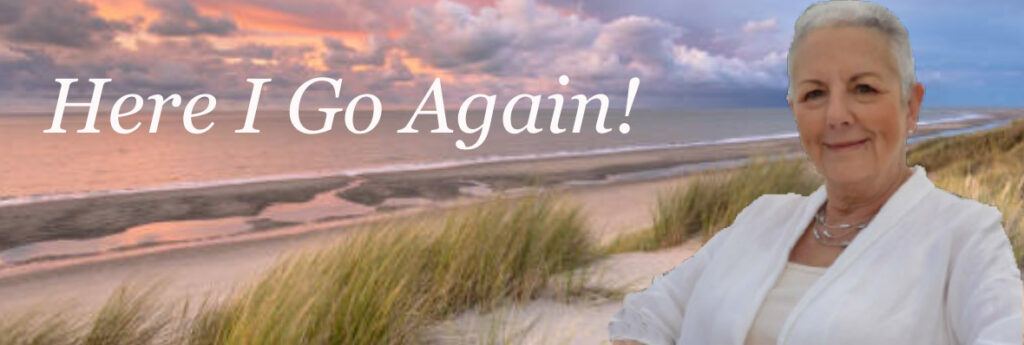Who isn’t dreaming of faraway islands? Of wide sandy beaches and a sparkling ocean. Of wind-blown sand dunes and pathways lined with wild roses. Of beach bars, cocktails and a sunset that lingers long into the night.
Ah ha, that last is the clue! I write not of the Caribbean, nor of the equatorial islands of Asia. You will be surprised to hear that the ocean I am writing of is the North Sea! The islands are part of the Netherlands. The region in which they lie is a UNESCO World Heritage Site. These charming islands have challenging names … I’ve been to all except one (Vlieland) and still don’t really know where I’ve been since the Dutch language seems to change its pronunciation from one new Dutch friend to another!
But here they are, collectively known as the West Frisian Islands: Texel, Vlieland, Terschelling, Ameland and Schiermonnikoog. They can be reached by ferry from Den Helder, Harlingen, Holwerd and Lauwersoog respectively. There are a few other, smaller islands but to reach these you need your own boat. They are a lovely summer destination, as many Dutch who own pretty houses in the sand dunes have realized … summers are warm, some of Europe’s widest beaches can be found here, days are long and sunsets famous.
But before we get to specifics, let’s look at the whole area. The islands form a barrier protecting the north of the Netherlands from the turbulent waters of the North Sea in winter. This ancient sandbank, a remnant of the Ice Age, once stretched from Cap Gris Nez in France to Esbjerg in Denmark. For more than two thousand years the sea has been eroding this sandbank, creating the shallow Waddenzee between the mainland and this string of islands.
As far back as the 8th century, monks established the first settlements on these islands. Other settlers followed, taking up farming and fishing with the added attraction of finding churches in such remote locations. Whaling in the 19th century, with its links to the Dutch East India Company, brought increasing prosperity.
As the tide ebbs and flows the shallow Waddenzee reveals its secrets: a vast network of channels and gullies, interspersed with mudflats and sandbanks. You may think your ferry is taking a circuitous route, then hours later on your return trip you realize just how shallow this sea is and how imperative it is for boats to keep to the narrow channels. This coastal region is unique, which led it to being declared a UNESCO World Heritage Site in 2009.
Unique in world geography, the region offers its plant and animal life much to sustain them: nutrient rich silt, vast salt marshes, mussel banks and seagrass meadows. And tourism helps to keep the islands prosperous. There are quaint villages, small hotels and guesthouses, seafood restaurants, little museums, craft stores, bicycle rentals, island cruises, mudflat walks, seal spotting, sand-yachting, birdwatching sites and horse riding while a variety of water-sport facilities can be found on the wide, sandy beaches of the north shores. The islands are popular with the Dutch, both for summer holidays and days trips, yet they remain quiet and peaceful and are an outstanding destination for nature lovers.
As can be expected, these expansive wetlands are an important area for breeding and migratory birds. The constant supply of worms, molluscs and crustaceans provide an ideal source of food for a wide variety of ducks, gulls and wading birds. In August, the peak of the migratory season, the number of birds here runs into the millions.
The best way to explore the islands is by bike and all islands have rentals. (Some of them are car-free anyway.). The islands are mainly flat but offer a wide variety of landscape – pasture, farms, sand dunes and forest. Wild flowers are abundant, including wild dog roses that line almost every pathway giving a shimmer of pink almost everywhere you look.
Being part of such an ancient maritime nation, it will come as no surprise that this area of Friesland abounds with sea stories, many of which can be discovered in the region’s little museums. How about trying to imagine the night of 5/6 March 1883 when the local fishing fleet experienced one of the heaviest spring storms in the written history of the region. The ice-cold sea north of the Wadden Islands, whipped into a frenzy, claimed the lives of 83 fishermen. Only Gerben Basteleur, aged 31, survived after he was washed onto the shore of Schiermonnikoog, where islanders found him, almost dead. But not quite. He survived and after just a few days returned to sea where, while fishing, he retrieved the body of his brother Jan who had been with him on the fateful night of the storm.
But summer visitors to this region will discover a calm, peaceful world. The weather isn’t tropical, but during the several weeks I spent there the weather was lovely and the long evenings and early sunrises of the north treat everyone to long, long days and some exquisite sunsets.
The world will open to us all in due course, but it may be some time before we decide to head to popular and crowded sites. Some lovely islands, part of a stable and welcoming country, may be just what is needed. And think how you will impress and bemuse your friends if you conquer the pronunciation and tell them you are planning a vacation on Schiermonnikoog!

